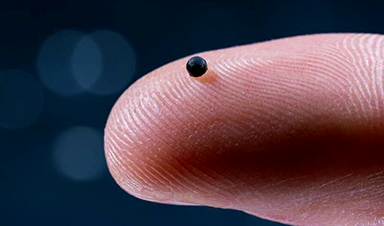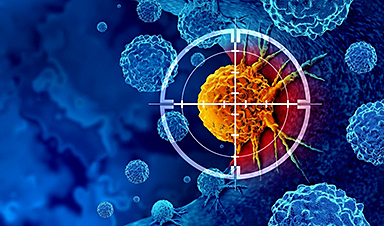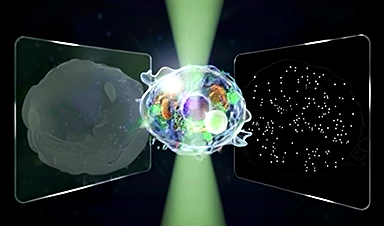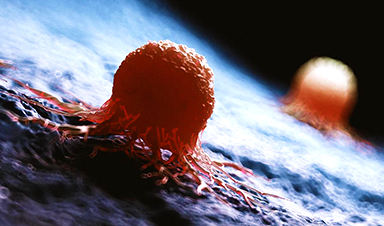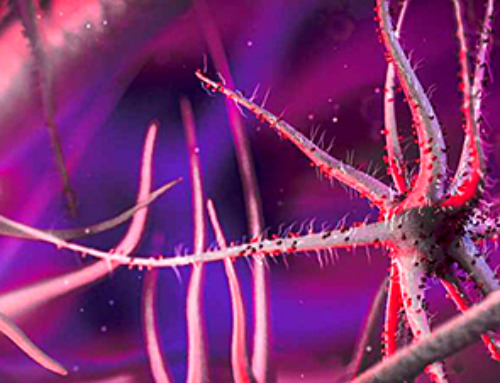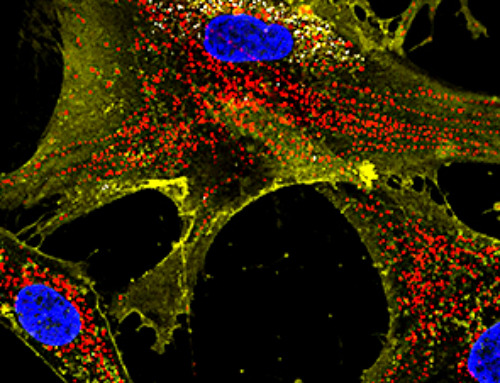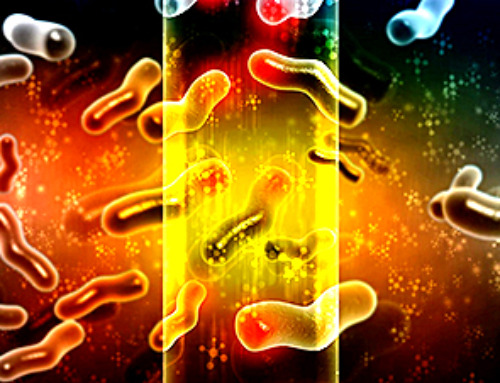Nanocomposites are a class of nanomaterials, where one or more nanostructured materials (organic/inorganic) are incorporated in metal, polymer, or ceramic to obtain a new material with many unique properties. Nanocomposites are applied in various branches of science and different industries, such as target drug delivery, imaging, agriculture, sensors, batteries, artificial implants, and aircraft. Advancements and continual research in nanotechnology promise the development of more potential nanocomposites with varied useful applications.
Some examples of nanocomposite components include nanofibers, nanorods, nanoparticles, and carbon nanotubes. One of the important features of nanocomposite is that it exhibits synergistic properties that are not present in the individual components. Typically, nanocomposites possess multifunctional properties, such as high mechanical strength, high electrical conductivity, and enhanced optical properties. They also have a high surface-to-volume ratio for the loading of biomolecules.
Experts have indicated that the global nano market would be driven by the increase in the use of nanocomposites, particularly in industries like packaging, aerospace, energy, automotive, electronics, and many others. This article discusses some of the recent innovations in nanocomposites and provides an overview of future applications.
Nanocomposites and Aircrafts
This new nanocomposite has exhibited good fire resistance and mechanical performance. Additionally, this material has increased peel strength property, which enhances the durability and integrity of the product significantly.
Some nanocomposites, such as MgB2, multi-walled carbon nanotubes, and acrylonitrile butadiene styrene/montmorillonite, are used in aircraft because of their superior durability, mechanical strength, flame retardancy, chemical resistance, and thermal stability.
Nanocomposite coatings protect the spacecraft structures from the harsh climate of the space environment.
Bionanocomposite for Replacing Plastic Packaging Material
Bionanocomposite has been developed using biopolymers like chitosan, carboxymethyl cellulose, and starch, along with nanomaterials that have the potential to resolve a major environmental hazard: the overuse of non-biodegradable plastics.
The biopolymer makes the nanocomposite biodegradable and non-toxic, while the nanomaterials impart thermal, mechanical, and gas barrier properties. Bionanocomposites are also light in weight which enhances their applicability.
In the development of novel bionanocomposites, the compatibility between the polymer matrix and nanomaterial is the most challenging aspect.
Packaging materials utilizing this nanomaterial have antibacterial activity, biodegradability, thermal stability, and mechanical strength, indicating their potential to be an alternative to plastic packaging.
This type of smart packaging could be extremely beneficial in the food industry. Polylactic acid/ clay nanocomposite resemble conventional plastics, with better tensile, mechanical, and thermal properties.
Nanocomposites and Sensors
Researchers have developed several nanocomposite-based enzyme sensors for the detection of various metabolites. For instance, graphene–chitosan nanocomposite electrodes have been developed as an enzyme sensor to detect glucose over a wider detection range of 0.08–12 mM and greater sensitivity.
Another nanocomposite, cadmium sulfide nanocrystals embedded carbon nanotube-based nanocomposite, has been used to create an enzymatic biosensor to detect choline and acetylcholine. Scientists have also developed metallic nanocomposites for the detection of phenolic compounds.
Bone Repair
Nanocomposites have also been recently found to be effective for repairing impairments in bones and soft tissues in bones because of their potential to increase osteointegration and osteoinductivity. This effect is also helpful in repairing soft tissues in the bone.
Nano-hydroxyapatite/poly(lactide) has revealed the capacity to enable suitable cell attachment to human cartilage.
Nanocomposite Membranes for Sustainable Water Purification
Membrane technology is a reliable and robust solution for producing freshwater through sustainable desalination. However, one of the problems that limit the performance of this technology is membrane biofouling.
Nanotechnology has helped develop anti-biofouling membranes by incorporating nanoparticles within the polyamide layer to produce a thin-film nanocomposite (TFN) structure.
Electronics and Polymer Nanocomposites
Polymers play a crucial role in modern electronic devices. Recently, polymer nanocomposites have attracted huge attention from different scientific disciplines for their virtuous processability and exceptional functionalities.
One of the most important properties of this nanocomposite is electrical conductance, which is applied in the development of many novel sensitive sensors to detect important physical parameters, such as strain or stress, pressure, temperature, solvent, or vapor.
For the development of non-volatile memory devices, hybrid nanocomposites have shown extraordinary performing capability with simple fabrication, high-mechanical flexibility while being inexpensive.
News
Novel mRNA therapy curbs antibiotic-resistant infections in preclinical lung models
Researchers at the Icahn School of Medicine at Mount Sinai and collaborators have reported early success with a novel mRNA-based therapy designed to combat antibiotic-resistant bacteria. The findings, published in Nature Biotechnology, show that in [...]
New skin-permeable polymer delivers insulin without needles
A breakthrough zwitterionic polymer slips through the skin’s toughest barriers, carrying insulin deep into tissue and normalizing blood sugar, offering patients a painless alternative to daily injections. A recent study published in the journal Nature examines [...]
Multifunctional Nanogels: A Breakthrough in Antibacterial Strategies
Antibiotic resistance is a growing concern - from human health to crop survival. A new study successfully uses nanogels to target and almost entirely inhibit the bacteria P. Aeruginosa. Recently published in Angewandte Chemie, the study [...]
Nanoflowers rejuvenate old and damaged human cells by replacing their mitochondria
Biomedical researchers at Texas A&M University may have discovered a way to stop or even reverse the decline of cellular energy production—a finding that could have revolutionary effects across medicine. Dr. Akhilesh K. Gaharwar [...]
The Stunning New Push to Protect the Invisible 99% of Life
Scientists worldwide have joined forces to build the first-ever roadmap for conserving Earth’s vast invisible majority—microbes. Their new IUCN Specialist Group reframes conservation by elevating microbial life to the same urgency as plants and [...]
Scientists Find a Way to Help the Brain Clear Alzheimer’s Plaques Naturally
Scientists have discovered that the brain may have a built-in way to fight Alzheimer’s. By activating a protein called Sox9, researchers were able to switch on star-shaped brain cells known as astrocytes and turn them into [...]
Vision can be rebooted in adults with amblyopia, study suggests
Temporarily anesthetizing the retina briefly reverts the activity of the visual system to that observed in early development and enables growth of responses to the amblyopic eye, new research shows. In the common vision [...]
Ultrasound-activated Nanoparticles Kill Liver Cancer and Activate Immune System
A new ultrasound-guided nanotherapy wipes out liver tumors while training the immune system to keep them from coming back. The study, published in Nano Today, introduces a biodegradable nanoparticle system that combines sonodynamic therapy and cell [...]
Magnetic nanoparticles that successfully navigate complex blood vessels may be ready for clinical trials
Every year, 12 million people worldwide suffer a stroke; many die or are permanently impaired. Currently, drugs are administered to dissolve the thrombus that blocks the blood vessel. These drugs spread throughout the entire [...]
Reviving Exhausted T Cells Sparks Powerful Cancer Tumor Elimination
Scientists have discovered how tumors secretly drain the energy from T cells—the immune system’s main cancer fighters—and how blocking that process can bring them back to life. The team found that cancer cells use [...]
Very low LDL-cholesterol correlates to fewer heart problems after stroke
Brigham and Women's Hospital's TIMI Study Group reports that in patients with prior ischemic stroke, very low achieved LDL-cholesterol correlated with fewer major adverse cardiovascular events and fewer recurrent strokes, without an apparent increase [...]
“Great Unified Microscope” Reveals Hidden Micro and Nano Worlds Inside Living Cells
University of Tokyo researchers have created a powerful new microscope that captures both forward- and back-scattered light at once, letting scientists see everything from large cell structures to tiny nanoscale particles in a single shot. Researchers [...]
Breakthrough Alzheimer’s Drug Has a Hidden Problem
Researchers in Japan found that although the Alzheimer’s drug lecanemab successfully removes amyloid plaques from the brain, it does not restore the brain’s waste-clearing system within the first few months of treatment. The study suggests that [...]
Concerning New Research Reveals Colon Cancer Is Skyrocketing in Adults Under 50
Colorectal cancer is striking younger adults at alarming rates, driven by lifestyle and genetic factors. Colorectal cancer (CRC) develops when abnormal cells grow uncontrollably in the colon or rectum, forming tumors that can eventually [...]
Scientists Discover a Natural, Non-Addictive Way To Block Pain That Could Replace Opioids
Scientists have discovered that the body can naturally dull pain through its own localized “benzodiazepine-like” peptides. A groundbreaking study led by a University of Leeds scientist has unveiled new insights into how the body manages pain, [...]
GLP-1 Drugs Like Ozempic Work, but New Research Reveals a Major Catch
Three new Cochrane reviews find evidence that GLP-1 drugs lead to clinically meaningful weight loss, though industry-funded studies raise concerns. Three new reviews from Cochrane have found that GLP-1 medications can lead to significant [...]









